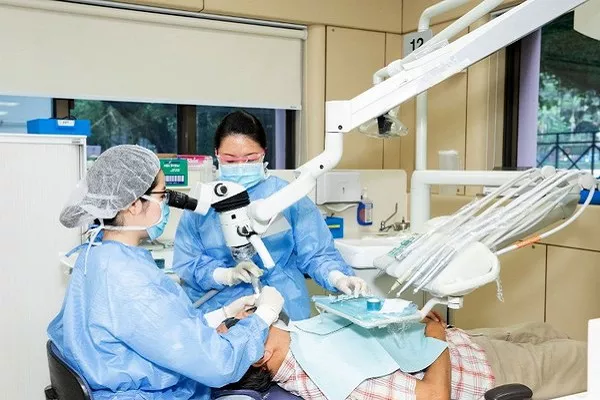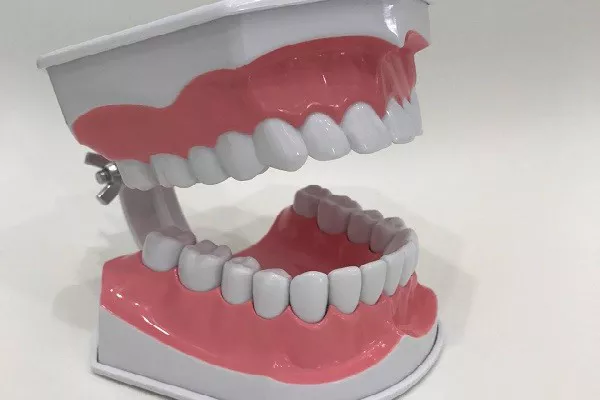Periodontal disease, also known as gum disease, is a common dental problem that affects many people worldwide. It is caused by bacterial infection in the gums and can lead to tooth loss, gum recession, and other oral health issues if left untreated. Fortunately, there are several steps you can take to reverse periodontal disease and improve your oral health. In this article, we will explore the most effective ways to reverse periodontal disease.
Practice good oral hygiene
The first step to reversing periodontal disease is to practice good oral hygiene. This includes brushing your teeth twice a day with fluoride toothpaste, flossing daily, and using an antiseptic mouthwash. Brushing and flossing help to remove plaque and bacteria from your teeth and gums, while the mouthwash helps kill any remaining bacteria in your mouth. It is essential to follow a consistent oral hygiene routine to prevent the buildup of plaque and bacteria that can cause gum disease.
- Brush at least twice a day with fluoride toothpaste
Brushing your teeth properly is crucial to removing plaque and food particles that build up on your teeth throughout the day. Use a soft-bristled brush and fluoride toothpaste to gently clean each tooth’s surface for two minutes.
- Floss daily
Flossing helps to remove plaque and food particles from between your teeth and below the gum line, where a toothbrush cannot reach. Use an interdental cleaner or floss threader to get into tight spaces between teeth if necessary.
- Use an antiseptic mouthwash
An antiseptic mouthwash can help reduce the amount of bacteria in your mouth and freshen your breath. Look for a mouthwash containing chlorhexidine or hydrogen peroxide, which are effective in killing bacteria associated with gum disease.
Quit smoking
Smoking is a significant risk factor for periodontal disease. It weakens your immune system, making it harder for your body to fight off infection. Smoking also reduces blood flow to your gums, which can cause them to recede and make it easier for bacteria to grow. Quitting smoking is one of the most effective ways to reduce your risk of gum disease and improve your overall health.
- Consider nicotine replacement therapy: Nicotine patches, gum, or lozenges can help reduce withdrawal symptoms and cravings associated with quitting smoking.
- Seek support: Join a support group or speak to a healthcare professional to discuss strategies for quitting smoking.
Maintain a healthy diet
A healthy diet rich in vitamins and minerals can help strengthen your immune system and prevent gum disease. Foods high in vitamin C, such as citrus fruits and leafy greens, can help strengthen your gums and promote healing. Avoid sugary and starchy foods that can increase plaque buildup and contribute to tooth decay.
- Eat foods rich in vitamin C: Citrus fruits, strawberries, broccoli, and peppers are all excellent sources of vitamin C.
- Choose calcium-rich foods: Calcium helps to strengthen teeth and bones. Dairy products, leafy greens, and fortified cereals are good sources of calcium.
- Avoid sugary and starchy foods: Sugary and starchy foods can contribute to plaque buildup, leading to tooth decay and gum disease.
Visit the dentist regularly
Regular dental checkups and cleanings are essential for maintaining good oral health. Your dentist can detect early signs of gum disease and provide treatment before it progresses. Professional cleanings remove plaque and tartar buildup, which can be difficult to remove through regular brushing and flossing.
- Visit the dentist every six months
Most dentists recommend scheduling a dental checkup and cleaning every six months to maintain good oral health.
- Follow recommended treatment plans
If your dentist recommends treatment for gum disease, such as scaling and root planing or antibiotic therapy, follow their instructions carefully to ensure the best possible outcome.
In conclusion, periodontal disease can be reversed with good oral hygiene practices, quitting smoking, maintaining a healthy diet, and visiting the dentist regularly. By following these steps, you can improve your oral health and reduce your risk of tooth loss and other health problems associated with gum disease. Remember to brush and floss daily, eat a healthy diet, and visit your dentist regularly to maintain good oral health.
Related Topics:
































